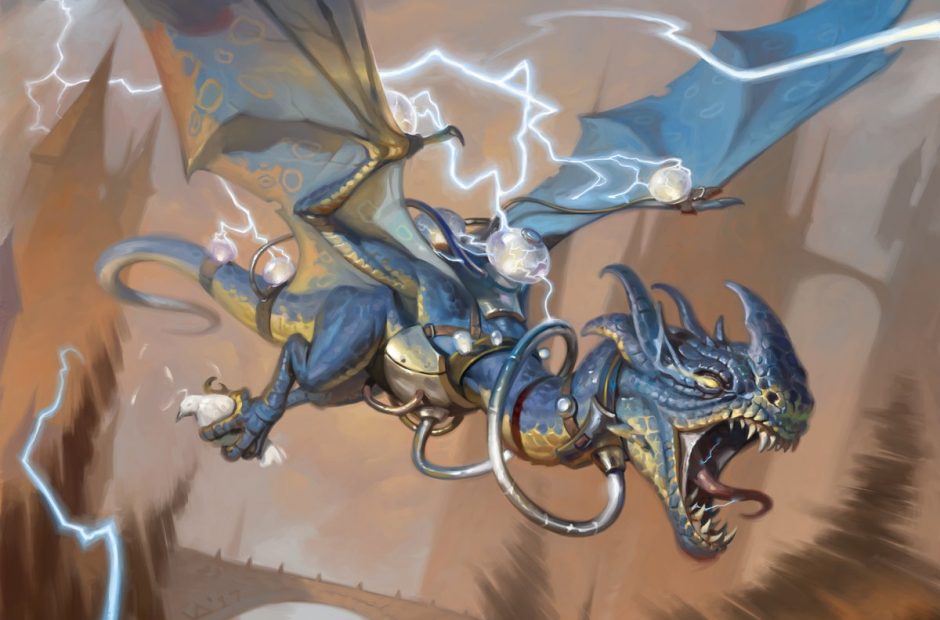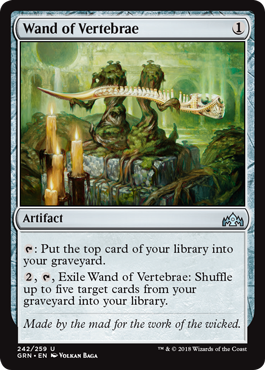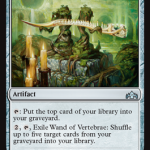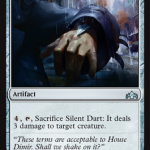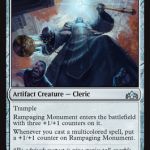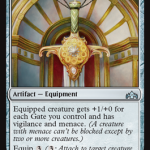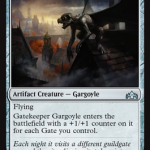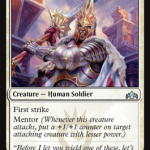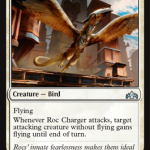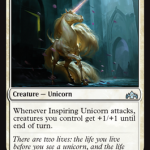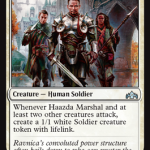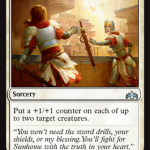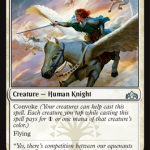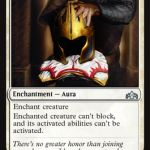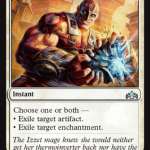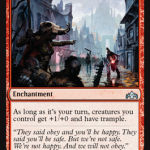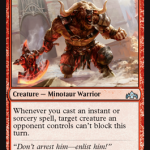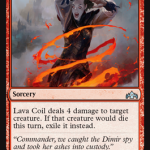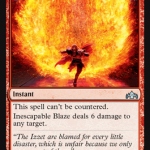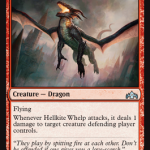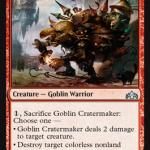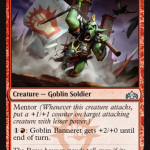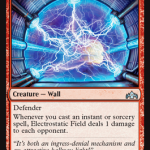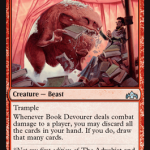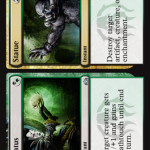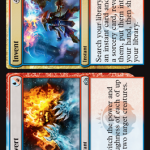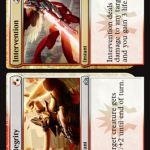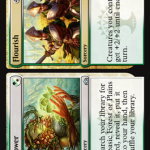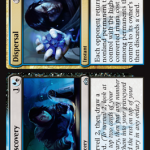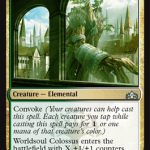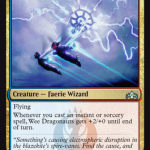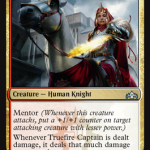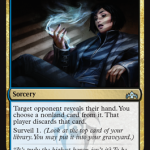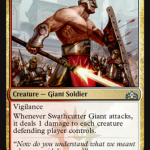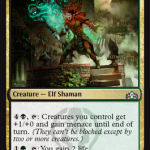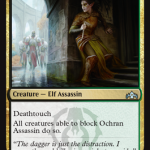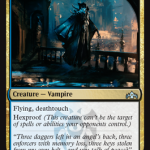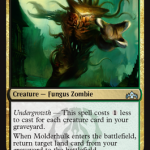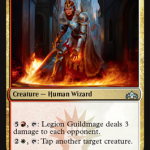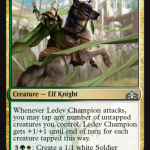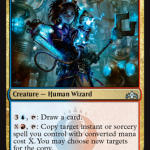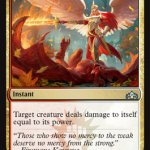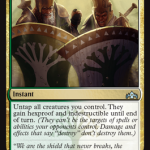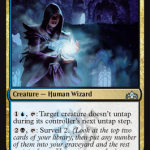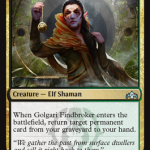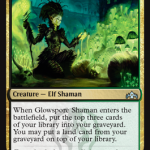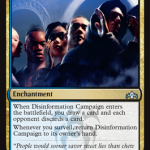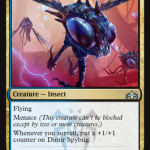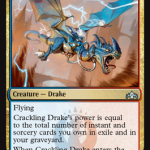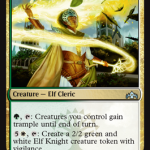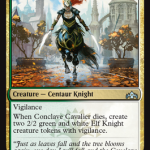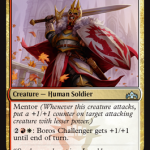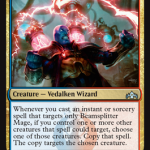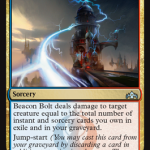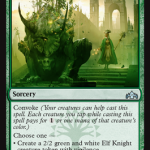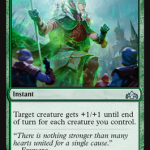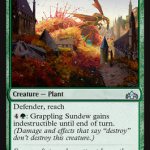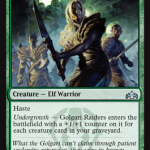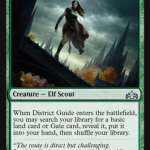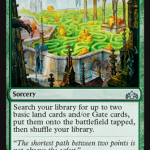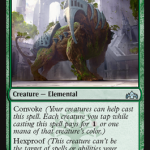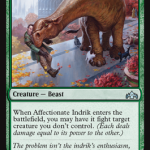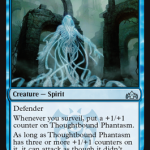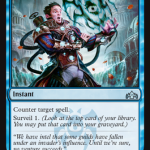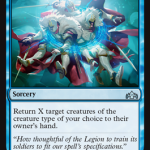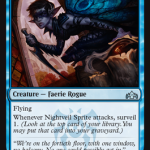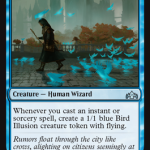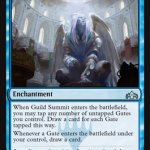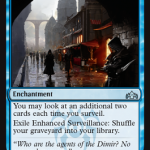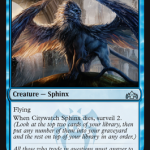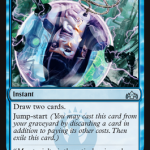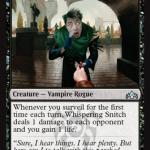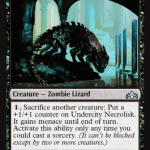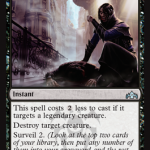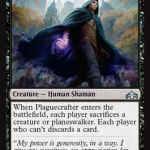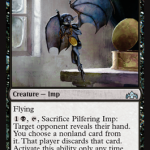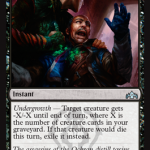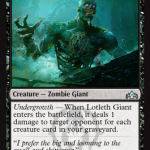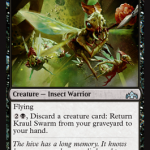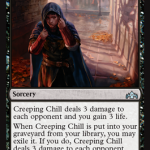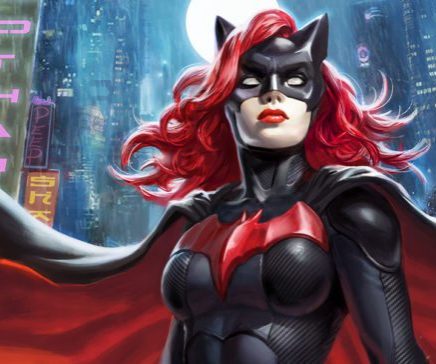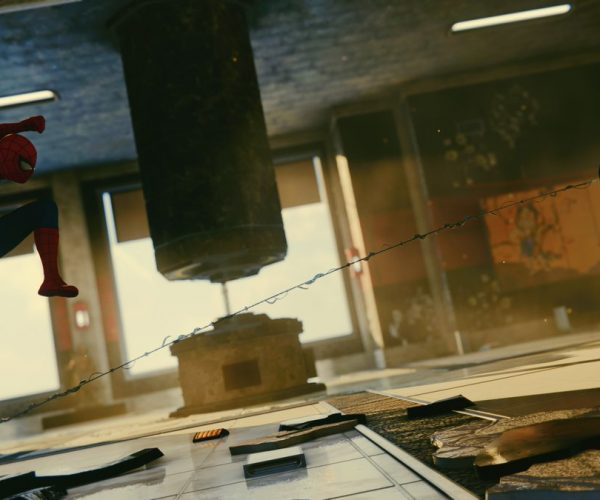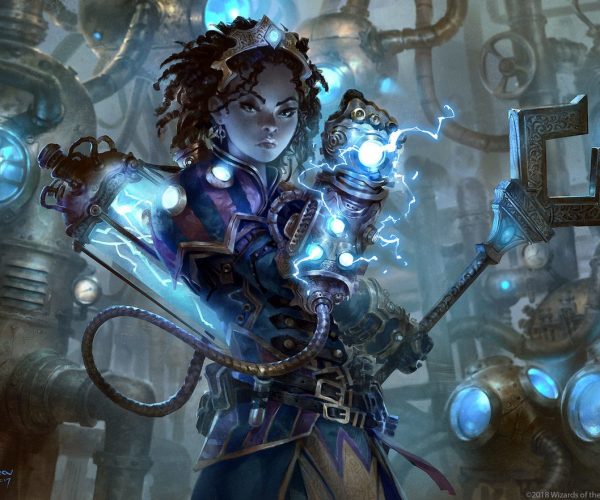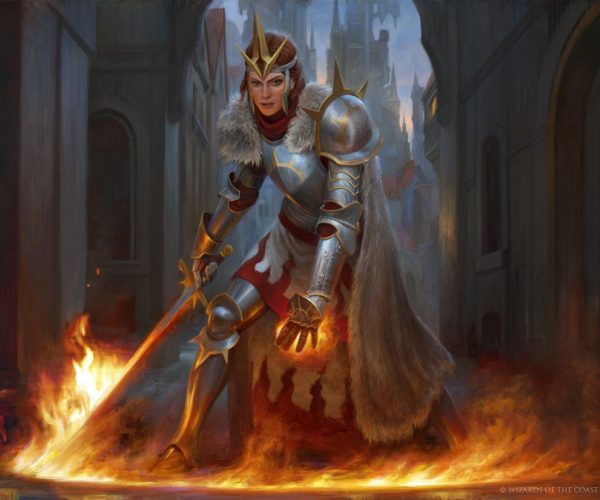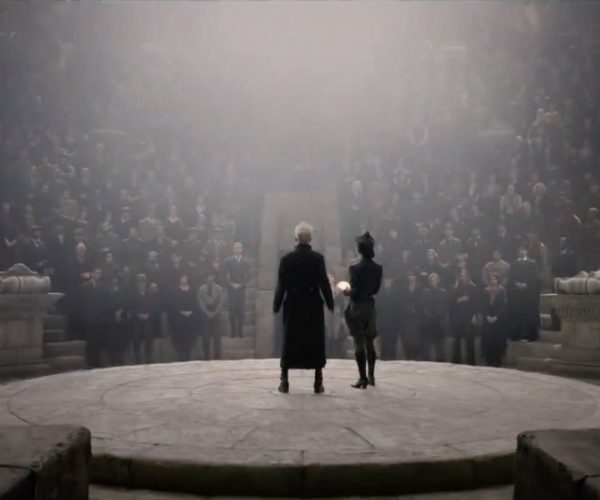Guild of Ravnica’s monocolored uncommon cards impressed us quite a bit yesterday, but the most powerful cards at uncommon always comes from the multicolored cards. Usually, an expansion will have one… possibly two multicolored uncommon cards, and you’ll be lucky if you find one that matches the colors you’re drafting.
Guilds of Ravnica has SEVEN uncommon cards in each color combination, so yeah… you’re going to get a few of these in your deck and be thankful for them. Much like the common cards, we simply have too much to talk about today, so we split up the uncommon reviews as well. Guilds of Ravnica has a load of playable cards, so you’ll be almost guaranteed to build a stunning deck when you go to prerelease this weekend.
So many uncommons have huge payoffs for their respected guild, and I feel somewhat guilty for only cutting only a few cards and making such long lists. It makes me feel indecisive, but that’s just where this set seems to be leaving me. On a personal note, multicolored uncommon are always my favorite cards in a set be it Enigma Drake, Reflector Mage, Cloudblazer, or the entire lineup of Dominaria’s legendary creatures. They are ust
Check out our favorite cards from Guilds of Ravnica below.
BOROS
Red/White
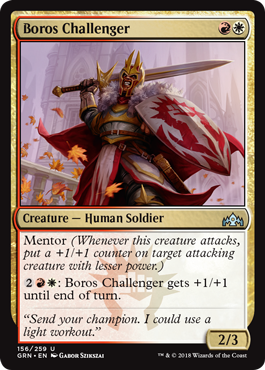
Boros Challenger is a two-mana mentor with huge stats! 2/3 on a two-drop usually means business, and this fills its role perfectly. Not only will this survive long enough to pass out a counter or two, it can also pump itself to become stronger and mentor stronger creatures.
Also, at a base of 2/3, its power is also low enough to be mentored by a stronger creature… which, on the stack, will pump its power and allow it to mentor stronger creatures as well.
See what I mean? Mentor is like a domino effect of making your creatures stronger. On paper, it sounds nice, but in practice, I’m dying to see if it works or not.
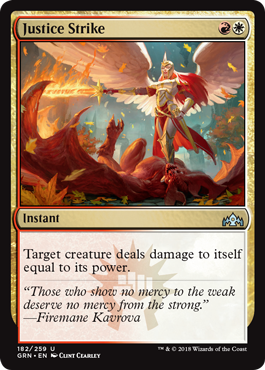
Red needs help with cheap, instant speed removal in Guilds of Ravnica, and White is here to somewhat deliver. Justice Strike can only outright kill creatures with a power equal to or greater than its toughness, of where there are plenty in Guilds of Ravnica.
Being instant speed, though, means this can be used as a combat trick to finish off a creatures with higher toughness. Decent enough to make the cut, but don’t expect to clear anything and everything for just two mana. Only Assassin’s Trophy can do that!
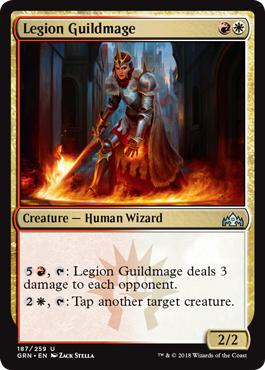
Guilds of Ravnica delivers a cycle of Guildmage cards, a series of 2/2 creatures for two mana. Each of these Guildmages comes equipped with a pair of activated abilities based on the the Guild’s two colors, and these abilities can be activated by tapping mana and the creature. The price you pay for the resulting effects would be very expensive if attached to an instant or sorcery spell, but seeing that they are attached to a creature and can be activated repeatedly and at instant speed, the additional price seems a bit fairer.
Legion Guildmage, Boros’ Guildmage, is a solid example of where to start. Both of these abilities are exactly what a Boros deck wants to do. Tapping down an opposing threat for three mana is expensive, but it works wonders at keeping threats pinned while your own creatures pound in for damage. Three direct damage to the face is also expensive for six mana, but guaranteeing those last three points of damage to close the game at any point is worth the cost.
You see? Expensive, but being able to sink excess mana into a Guildmage and cast these abilities over and over makes it worth the cost.
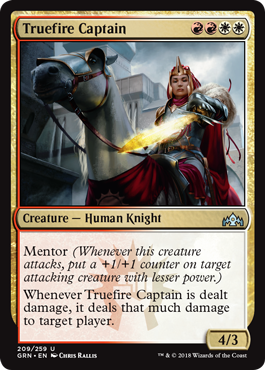
This is yet another cycle that appears in each Guild. These creatures have a casting cost of four mana, requiring two of each color and no option for colorless mana. Wizards is being strict here since these cards would be too powerful if splashed into opposing Guilds.
Boros’ creature from this cycle, Truefire Captain, is a 4-power mentor that can put +1/+1 counters on creatures that are already powerful. If it is killed in combat, it guarantees that the opponent will be taking at least 3 damage anyway and almost assuredly trades with the creature.
Don’t worry, even if it dies, it still passes out its +1/+1 counter, making combat with this creature pure value. Always attack, no matter what!
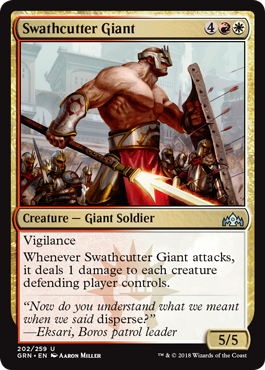
Rock on! This is the guy you want on the top of your curve! Swatchcutter Giant wipes the board of 1-toughness chump blockers and makes stronger blockers all the easier to kill. The added benefit of vigilance means anything that survives your army’s wrath will have to crack back into a big, bad 5/5 giant.
Ouch! This card stablizes any board state defensively and breaks open any stalemate offensively. Perfect for any Boros deck, and easy to Splash into Selesnya decks too.
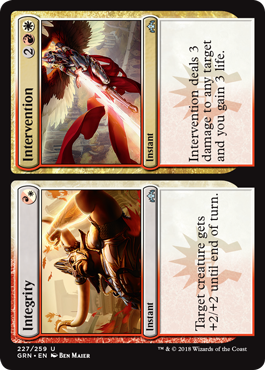
The split cards in Guilds of Ravnica are pretty simple. You get to choose one half of the card and one half only. The other half of the card does not matter once the first half has been cast. Usually, the abilities will be weaker than the standard effect for that price or more expensive than what the effect usually asks for, but that’s the price of the versatility you’re looking for.
Each Guild has a cycle of one split-card at uncommon and one splat-card at rare. Boros’ uncommon gives +2/+2 until end of turn at a reasonable price of one mana, or it provides an expensive Lightning Helix, which will usually kill an opposing creature and help offset some damage with the lifegain. Both halves of this card are great and do exactly what Boros wants.
______________
Boros is sweet. These multicolored cards would have all been equal in power with rare cards in another set, and combined with the direct damage Red cards and the White mentors and removal we saw in our uncommons review yesterday, Boros sees a huge boost in power over the commons.
Notice that I wrote about ALL of Boros’ uncommons. No exclusions because every card is excellent. No matter what, Boros’ uncommons are something you’ll want to take in a draft.
Selesnya
Green/White
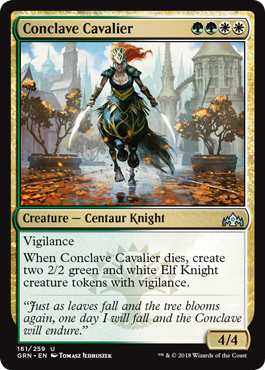
Selesnya needs no help after its healthy set of commons and great White and Green cards at uncommon, but our first uncommon shows us that we’re only going up from here. The Conclave Cavalier is the best Limited card in the four casting-cost creature cycle, delivering a 4/4 vigilance creature that splits into two 2/2 vigilance creatures when it dies.
That’s a disturbing flavor fail though since splitting a centaur in half doesn’t exactly mean you get a live elf and a live horses body… ewwwwww.
But still, 4/4 for four mana is on course with Green’s ramp threats, and vigilance is the lifeblood of convoke. With this card charging in, opponents can either choose between containing a big 4/4 threat on the board or killing it and having to deal with two decent 2/2 creatures that double as strong convoke fodder. Not an easy choice since Selesnya capitalizes on both situations.
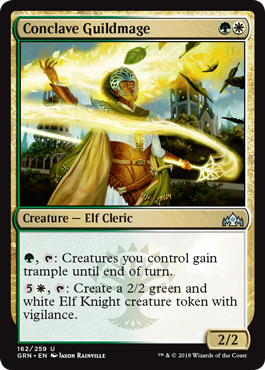
Selesnya’s Guildmage is pretty solid, but I’m a fan of Boros’ more. The first ability gives trample to all creatures for just one mana, and this ranges from useless if you have an army of small tokens to game-winning if you have an Arboretum Elemental on the battlefield.
Later in the game, this Guildmage becomes a lot better, acting as a perfect mana sink with the ability to cranking out vigilance creatures all on its own. Six-mana is a lot to pay for a 2/2 creature, but remember, this is supposed to be wasted mana you weren’t going to use anyway.
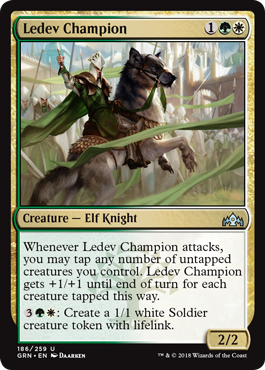
Another rock solid creature. This one uses a pseudo-convoke activated ability that makes it stronger when it attacks. The more creatures and tokens you control, the stronger it gets. Remember, this must be activated when it attacks and can’t be done once blockers have been declared.
When Ledev Champion isn’t attacking, it can pump out its own lifelink soldiers. Five mana is expensive for a 1/1 lifelink, but it can be activated multiple times a turn and get out of hand later in the game.
This card is an aggressive threat early and a quality mana sink later, good in both the long and short game. Great card.
______________
But I only mentioned three cards, meaning there are four I don’t feel are worth making the cut. Oh well, Selesnya’s commons are powerful enough to offset a few mediocre uncommons.
The three cards I wrote about give me hope, but the strength of Selesnya’s does not reside in its multicolor uncommons.
Sorry, Selesnya… meh.
Golgari
Black/Green
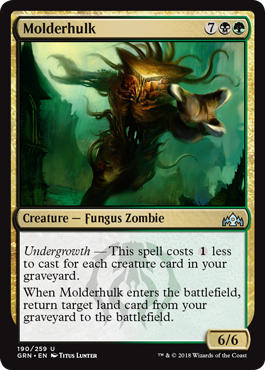
I’m tired of ragging on Golgari and undergrowth. I want them to be better because I like Golgari a lot, so I’ll just come out swinging with it. Molderhulk is the kind of undergrowth payoff you want to see in the color. It’s a huge 6/6 body that can be cost for as little as two mana later in the game, that’s big enough to not only tangle with Selesnya’s big creatures, it’s also cheap enough to leave mana open for combat tricks.
Better yet, if you accidentally toss a land into your graveyard while stacking it with corpses, Molderhulk gets the land back for you! How sweet.
Golgari wants to stall early and make its big plays late, and a 6/6 for two or three mana makes for a pretty nice turn-6 or turn-7 play.
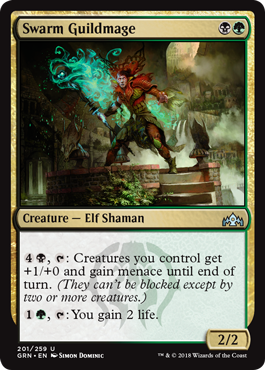
Okay, okay, I get it. The Guildmages are all rock solid, and you’re going to want them if you’re in their colors. Golgari’s Guildmage boosts all of his teammates’ power and, more importantly, gives them menace. This Guildmage makes your army a nightmware to block, and it ensures those that double block have a higher chance to eating the dust as well.
And as much as I want to credit Golgari for this ability, Swarm Guildmage is clearly better utilized as a splash in a Selesnya deck, where all of your tokens benefit from the power and evasion boost.
Secondly, if you have two spare mana at the end of an opponent’s turn, hey, why not gain those two life? Just because you can. A nice little bonus for not tapping out.
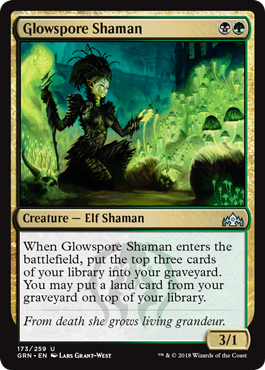
Aggressive 3/1 creatures are not what Golgari is looking for, but this does load your graveyard with creatures and gets any lands back that you didn’t want to discard. If played early, it will probably trade with a creature and find itself in the graveyard for even larger undergrowth payoffs later in the game. Enabler all the way.
Later in the game, Glowspore Shaman can protect you from flooding since you don’t have to put those lands back on top of your deck. However, you also run the risk of putting your undergrowth win conditions in the graveyard, rendering all these investments as totally useless.
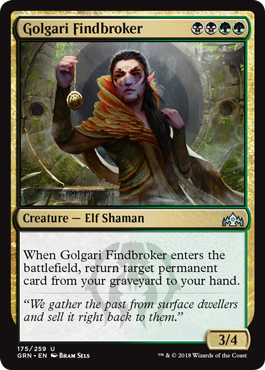
But here is your answer! Did you accidentally toss your bomb win condition with the Glowspore Shaman? Well, buy it back with Golgari’s’ four drop cycle creature, the Golgari Findbroker. Even if you didn’t put your bomb in the graveyard, this can still dig you back something big while still stalling the board as a nice 3/4 body.
Be careful, this only buys back permanents. If the win condition you tossed was an instant or sorcery, well, you’re SOL.
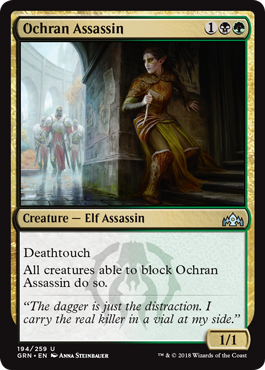
Ochran Assassin might not seem like much on the surface as a 1/1 for three mana, but it serves several purposes. One, of all the creatures that have to block it, at least one of them is guaranteed to be killed. Obviously, you pick the biggest, best creature and you’ve traded up. Win! With a single pump spell, this card can kill two, three, or even four of those creatures. Win win!
Two, if an opponent doesn’t want a creature to be killed when this attacks, they’ll have to tap that creature somehow. This can throw an opponent off guard with an awkward attack, which will still result in the creature’s death, or a convoke spell that they were saving for later. In other words, Ochran Assassin on the board can throw an entire strategy off base just by sitting there.
The third big use is that it opens the way for the rest of your creatures to get in. If you attack with the guy, definitely send in the whole squad because all of their blockers are required to focus here. Again, this has a ton of use in Selesnya, and your go-wide deck will capitalize on this ability far better than Golgari’s 6/6 bombs.
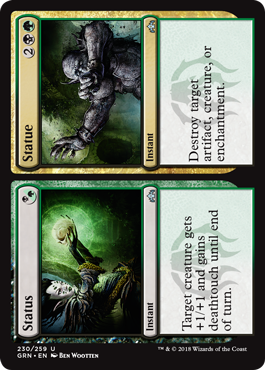
Golgari’s split card is awesome, possibly the best. Instant speed deathtouch for a single Green or Black mana will certainly tick off many opponents. Whether you kill one creature unexpectedly or cast this to wipe out a group of chump blockers who gang up on your bomb… blowouts all around, and the casting cost is right for such a dirty trick.
Better yet, +1/+1 might even allow your creature to survive! Oh happy day!
The expensive side is where Status//Statue’s true power lies. Simply put, you can blow up anything at instant speed for just four mana. Because, hey, what’s another removal spell for Black?
______________
I like Golgari’s uncommons, much more than the commons at least. It’s nice to see a good undergrowth payoff finally, and that split card can hit almost anything on the board at any given moment.
Again, the undergrowth synergies are mostly an afterthought, with Golgari’s best cards getting by on power level alone.
Dimir
Blue/Black
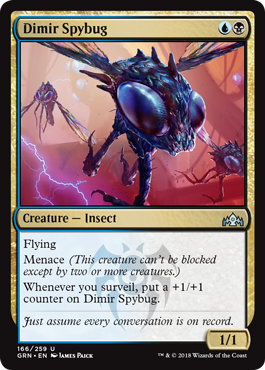
Dimir Spybug is a fun little build-around. With enough surveil cards in your deck, it’ll grow to huge sizes within a matter of turns, and considering that surveil is everywhere for a wide ranges of prices, you should have no problems making this a 3/3 or a 4/4 by turn-5.
After that, flying and menace combined make a creature nearly impossible to block. Not one but two weenies will have to get in the way of this thing, and when they do, an instant speed surveil will crush them and let you fix your deck.
But I’m sure that we won’t be seeing that much more surveil… I mean we already have so much of it.
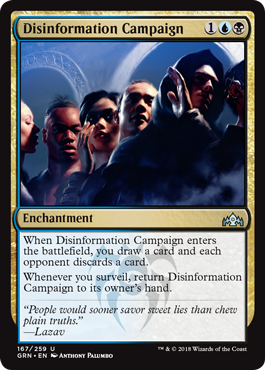
More surveil payoffs! Disinformation Campaign is sure to draw you at least two or three cards over the course of a game and force your opponent to toss just as many. Play this and draw, surveil, play this and draw, surveil, play this and draw, surveil…over and over and over.
If you’re looking to crush an opponent with card advantage, this is your answer.
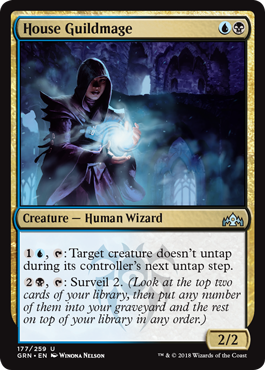
Dimir’s Guildmage is another one from the cycle you’ll want to take in a draft. Its blue ability pins down any creature that is already tapped, effectively keeping it pinned so long as you keep paying that surprisingly cheap two mana cost. This is an excellent way to keep a threat at bay.
And the black ability… surveil.. at instant speed… any time, anywhere. Surveil is just everywhere. It’s almost like Wizards really wants us to use it.
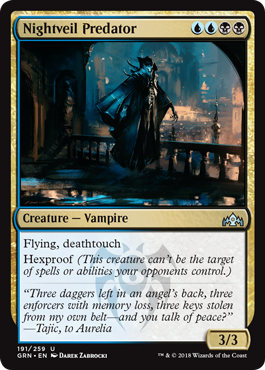
Here’s a creature you can’t target with removal and definitely can’t block outright. Nightveil Predator’s hexproof protects him from the worst spells in the game, and as for flyers, the only blockers will be something bigger you won’t want to trade or multiple smaller creatures, creating a two-for-one blowout.
Wizards has stated they want to be careful with hexproof, but this certainly doesn’t look like they were being careful.
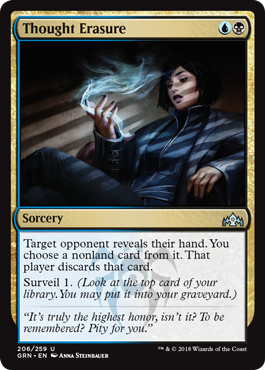
Thoughtseize + surveil. Sure thing, no need for a sideboard.
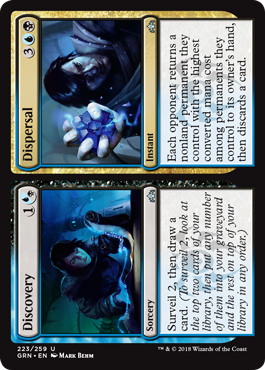
Guess what you can do on the first half of this card. Yup, surveil… and then draw a card. Pick from the deck you just fixed, how wonderful.
On the other side, you bounce an opponent’s biggest threat and watch gleefully as they discard something. You really want to play this when nothing is in their hand, forcing them to discard that threat. Try not to laugh though, that is not Dimir’s style.
______________
So Dimir has six surveil multicolored cards. If you land in Dimir, you’re guaranteed to have some synergies here, and if not, you’re still guaranteed to make the draws you want. The final uncommon… a creature that’s next to impossible to kill.
Yeah, Dimir is awesome. at uncommon.
Izzet
Blue/Red
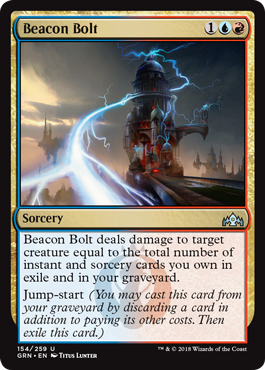
Izzet is all about stocking up on powerful spells and letting them fly. This spell capitalizes on trigger happy Izzet players who have nothing better to do but sit back and sling lightning bolts and bounce spells. Four damage, five damage or even six damage should be enough to clear out most creatures. This happens not once but twice, thanks to jump-start.
And remember, cards you jump-start from the graveyard into exile still contribute to that damage. Don’t hold back.
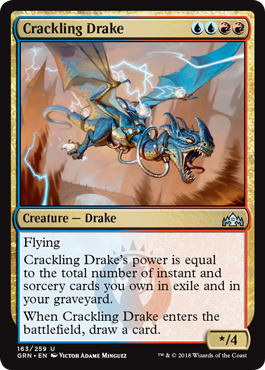
Crackling Drake uses the same setup as Beacon Bolt and ties to my beloved Enigma Drake. Crackling Drake might be harder to cast and more expensive, but that additional cost comes at the benefit of Crackling Drake powering up on instant and sorcery spells in exile. This card was designed to capitalize on jump-start, where Enigma Drake was not.
In Limited, the argument over which is better doesn’t matter because Enigma Drake is not in Guilds of Ravnica. Crackling Drake is super solid if you are playing in Izzet, and pushing out a potential 6/4 or 7/4 flyer for four mana is really good…
…Enigma Drake is better, btw. Four mana is not worth the value of jump-start.
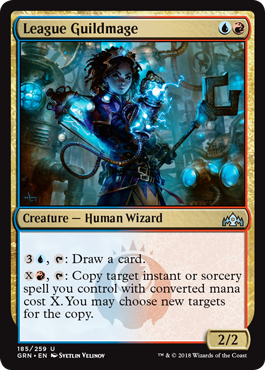
Guildmage! Izzet’s is fine because who doesn’t love drawing a card? Four mana is a lot, but when you have nothing else to do with that mana, drawing a card is a nice little way to find extra value.
League Guildmage’s second ability is entirely dependent on having a cheap and powerful spell you actually want to copy, like Lava Coil. When you don’t, it’s useless. When you do, oh man. It’s devastating.
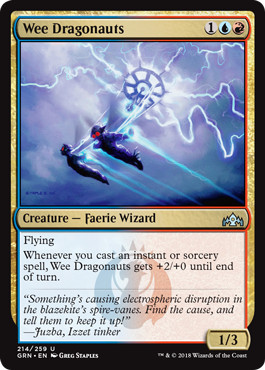
In a proper Izzet deck with lots of spells, Wee Dragonauts gets in for huge damage each turn. Double prowess is nothing to laugh at. Just don’t use those spells before this hits the battlefield.
______________
I’m still not digging Izzet. It’s just so random and has so many factors that need to click for it to be a success. In addition to having everything line up properly, I can also see it being difficult to properly draft. Golgari steps up its game after seeing the uncommons, Izzet… not so much. I’m not digging it, Niv. Sorry.
After looking at all of the uncommons though, Dimir is still easily the best of the Guilds. Surveil, on its own, is a very strong mechanic that ensures you’ll be drawing the cards you want, and when attached to removal, Thoughtseize, or a big, bad 5/4 flyer, each of these effects only becomes more valuable.
Uncommon also has several payoffs for surveil that include card draw, an evasie flying threat or a 5/5 for just one mana. Come on, how can this not be the best?
Boros also has great uncommons, delivering even better mentors than what were available at common. Boros also benefits from Lava Coil better than any other Guild out there.
Selesnya’s uncommons are all strong in monocolor Green and White, Arboretum Elemental and Conclave Tribunal more specifically. The multicolor cards leave a bit to be desired however and don’t grant as good of payoffs as the previous two Guilds.
Again, Izzet and Golgari are struggling to impress. Golgari looks a bit better at the uncommon level with a few more removal spells and a 6/6 for potentially two mana, but Izzet’s payoffs are still lacking.
